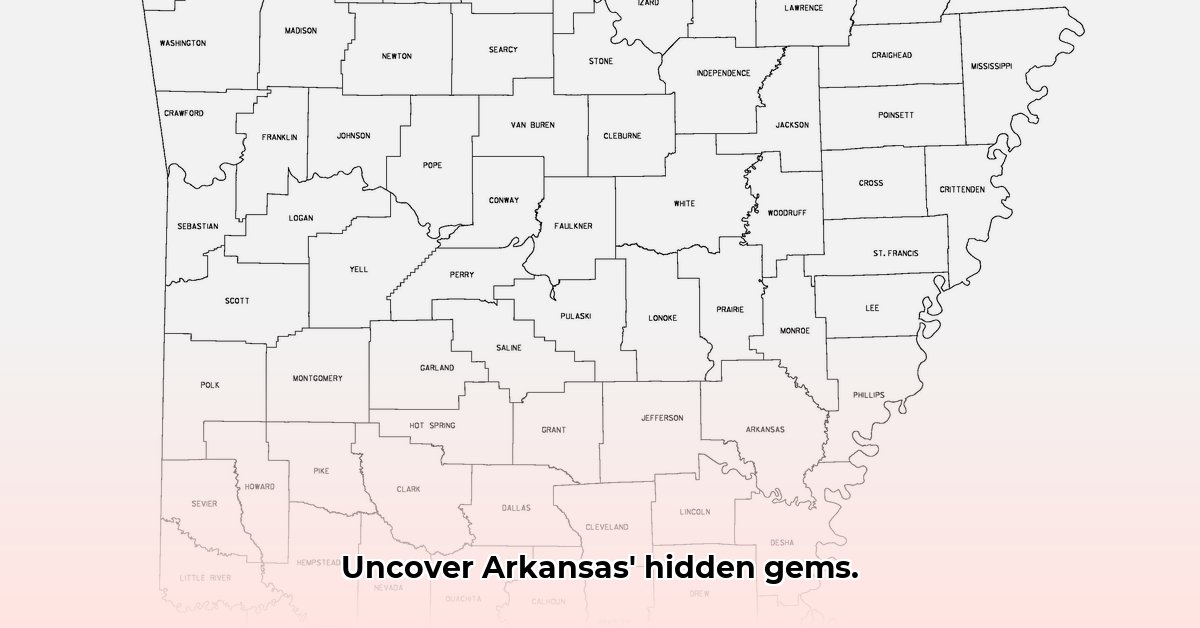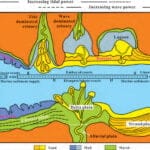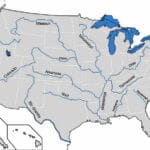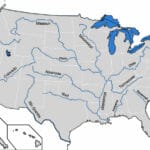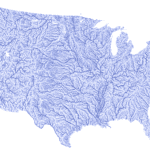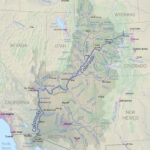Arkansas, aptly named the “Natural State,” boasts a diverse landscape ranging from the rugged Ozark Mountains to the fertile Delta lowlands. This article explores the geographical tapestry of Arkansas, examining its impact on the state’s population distribution, infrastructure, and overall character. To understand Arkansas’s river systems better, learn Mississippi River flow.
Arkansas’s Diverse Topography: Shaping the Landscape
Arkansas’s topography is a captivating blend of rolling hills, towering mountains, verdant valleys carved by meandering rivers, and expansive plains. The Ozark and Ouachita Mountains rise in the north and west, while the Arkansas River Valley bisects the state, creating a fertile corridor. The eastern lowlands, part of the Mississippi Alluvial Plain, offer rich agricultural land. This varied terrain has profoundly influenced the state’s development and its residents’ way of life.
Population Dynamics: Urban Centers and Rural Communities
Arkansas’s population distribution reflects its diverse geography. Little Rock, the state capital, serves as the primary urban hub, attracting businesses and cultural institutions. Northwest Arkansas has experienced significant growth, driven by a burgeoning tech industry. Yet, much of Arkansas retains its rural charm, with smaller towns and communities dotting the landscape. This mix of urban and rural life contributes to the state’s unique character.
Infrastructure: Navigating the Natural State
Arkansas’s infrastructure has been shaped by its geographical complexities. Historically, rivers, particularly the Mississippi, were vital trade routes. Today, a network of interstate highways, including I-30, I-40, and I-55, connects major cities. However, the rugged terrain of the Ozark and Ouachita Mountains presents ongoing challenges for road construction and maintenance. Continued infrastructure development is essential for connecting communities and fostering economic growth.
Arkansas’s River Systems: Lifeblood of the State
The Arkansas, Mississippi, White, Red, and Ouachita Rivers are integral to the state’s history and ecology. They provide not only transportation routes but also water for irrigation, industry, and recreation. The Mississippi River, forming the eastern border, has played a particularly significant role in shaping Arkansas’s commerce and culture. Understanding the dynamics of these river systems is crucial for managing water resources and mitigating flood risks.
Regional Diversity: A Mosaic of Landscapes
Arkansas’s distinct geographical regions each possess unique characteristics. The Ozark Mountains, known for their scenic beauty and recreational opportunities, attract tourists and outdoor enthusiasts. The Ouachita Mountains, with their hot springs and unique east-west orientation, offer a different kind of natural wonder. The Arkansas River Valley’s fertile soil supports a thriving agricultural sector, while the Mississippi Alluvial Plain provides rich farmland and a crucial habitat for diverse wildlife.
Crowley’s Ridge: A Geological Anomaly
Crowley’s Ridge, a narrow band of elevated terrain rising abruptly from the flat Delta lowlands, presents a geological puzzle. This unique landform stretches for over 200 miles, creating a distinct ecosystem and influencing local settlement patterns. Its formation remains a topic of scientific inquiry, adding another layer of intrigue to Arkansas’s diverse landscape.
Infrastructure Development: A Geographic Perspective
Analyzing Arkansas’s infrastructure development necessitates a deep understanding of its varied geography. The mountainous terrain of the Ozarks poses distinct challenges for road construction and maintenance, while the lowlands of the Delta are susceptible to flooding. Effective infrastructure planning must consider these geographical factors to ensure resilient and sustainable development. This involves collecting diverse geographical data, including elevation maps, soil composition, hydrological patterns, and geological surveys. Integrating this data through Geographic Information Systems (GIS) allows for detailed vulnerability assessments, cost-benefit analyses, and optimized connectivity planning. Consideration of population distribution and potential environmental impacts is crucial for responsible infrastructure development.
Arkansas River Valley: Agriculture and Infrastructure’s Interplay
The Arkansas River Valley, a fertile expanse nourished by the Arkansas River, boasts a rich agricultural heritage. Soybean, rice, and poultry production are key contributors to the state’s economy. However, sustainable agriculture in this region requires careful management of water resources, especially in the face of climate change. Modern irrigation systems and efficient transportation networks are crucial for maintaining productivity and ensuring the long-term viability of the agricultural sector.
Ozark Mountain Tourism: Balancing Economy and Ecology
The Ozark Mountains’ natural beauty draws visitors seeking outdoor adventures, from hiking and fishing to exploring caves and waterfalls. This tourism generates significant economic benefits but requires careful planning to minimize its environmental footprint. Sustainable tourism practices, including eco-friendly infrastructure, responsible visitor education, and community engagement, are essential for preserving the Ozarks’ natural splendor while fostering economic growth.
- Period Quiz: Predict Your First Period - April 20, 2025
- Unlock English Vocabulary: The Comprehensive Con Prefix Guide - April 20, 2025
- Unlock Wordle & Scrabble Wins: Mastering Words with S, T, A, R, T - April 20, 2025
